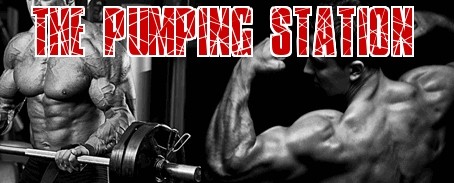Hypertrophy Specific Training
Hypertrophy-Specific Training (HST) first started when sports scientists started looking at the exact mechanisms involved in muscle hypertrophy. The science of muscle growth continues to be examined and is constantly changing but HST is certainly a specific way of creating a workout that is specifically designed for maximum muscle hypertrophy.
HST is a training philosophy based on a few scientific principles which have now proven themselves to be highly effective for competitive bodybuilders trying to increase muscle hypertrophy. Training each body-part three times a week by using only 1 or 2 sets for each body-part to ensure constant muscle growth. The following 6 points are the basis of Hypertrophy Specific Training (HST).
1. Mechanical Load:
Sports science now tell us that in order to generate muscle hypertrophy we need a mechanical Load. It is directly involved but is not limited to, satellite cells, growth factors plus something called MAPk/ERK and calcium and a few other growth factors that they understand a bit better than they used to.
2. Acute vs. Chronic Stimuli:
They have now conclusively proven that to generate any hypertrophy in the muscles a stimulus needs to be applied with enough frequency to create the new "environment." This is very different to creating randomly acute assaults on the specific mechanical integrity of the muscle tissue.
Sports science has now conclusively proven that the list of acute responses to physical training increasing protein synthesis, the prostaglandins, the IGF-1 and the mRNA levels will all return to normal after 36 hours. It is for this reason that training once a week is not going to produce hypertrophic results.
3. Progressive Load:
Progressive overload is the adaptation of the muscle tissue becoming more resistant to the otherwise very damaging effects of lifting a mechanical load. This adaptation will happen in only 48 hours but muscle hypertrophy will then stop as the other metabolic adaptations continue.
Unlike muscle hypertrophy, the development of any increased strength will always be neuromuscular in nature. Increases in strength because of lifting a mechanical load is the result of several neural adaptations plus a few altered recruitment patterns, motor unit synchronization plus reflex potentiation and rate coding, together with the prime-mover agonist and antagonist activity. This means that the increased number of contractile muscle filaments (hypertrophy) will go together with strength or voluntary force production is the "activating" of these motor units.
4. Strategic Deconditioning:
When progressive overload or muscle hypertrophy is achieved one can or should either increase the load lifted or to decrease the amount of conditioning to the load called Strategic Deconditioning. The muscle response will vary not only to the mechanical load lifted called the absolute load, but will also change when the load is increased up or down.
This means that even if the absolute load lifted is not more than you lifted the last time you trained you can still get the hypertrophic effect by simply increasing the load from the last time you trained that body-part. This is assuming you're your conditioning or your resistance to the exercise induced micro-damage is not too extensive.
5. Utilizing lactic acid stimulating tendon repair/health:
HST has come a long way since it was first discovered as it can now incorporate higher reps generating more lactic acid to help prepare your muscles and your tendons for any future heavy loads. Without this "regular maintenance" you would dramatically increase the risk of developing chronic injuries and pain. High reps are metabolically-taxing but can significantly enhance the healing of all strained tendons.
6. Progressively adjusting the rep range to ensure progressive load:
HST explains that you need to reduce the sets for each movement done to only 1 or 2 sets because of scientific evidence now available clearly shows that beyond the first 2 sets the hypertrophic effect is negligible and only burns calories.
Click Here to Sign Up for Your Free Bodybuilding Magazine Subscription
